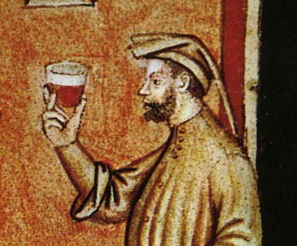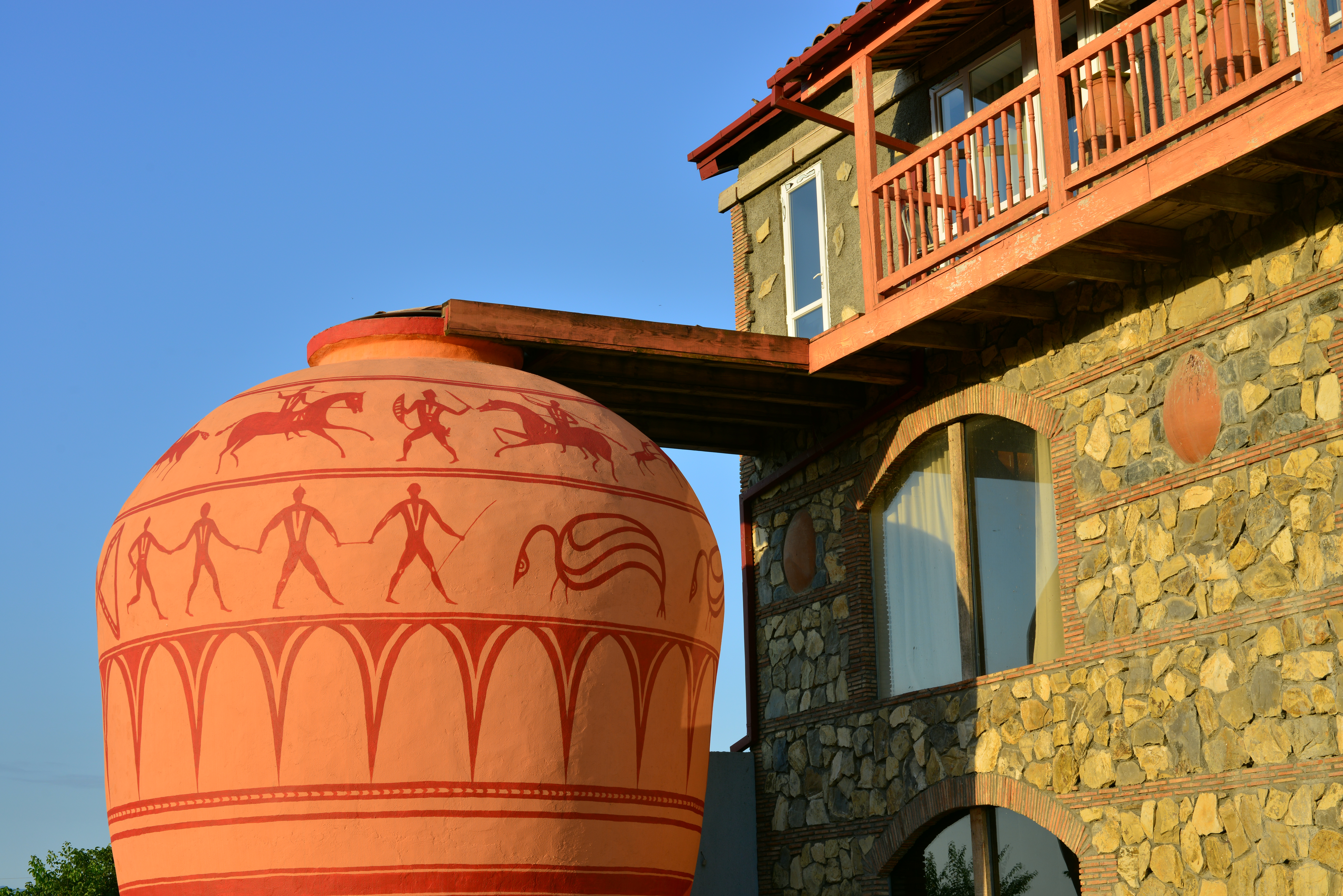|
Old World Wine
Old World wine refers primarily to wine made in Europe but can also include other regions of the Mediterranean basin with long histories of winemaking such as North Africa and the Near East. The phrase is often used in contrast to " New World wine" which refers primarily to wines from New World wine regions such as the United States, Australia, South America and South Africa. The term "Old World wine" does not refer to a homogeneous style with "Old World wine regions" like Austria, France, Georgia, Italy, Portugal, and Spain each making vastly different styles of wine even within their own borders. Rather, the term is used to describe general differences in viticulture and winemaking philosophies between the Old World regions where tradition and the role of '' terroir'' lead versus the New World where science and the role of the winemaker are more often emphasized. In recent times, the globalization of wine and advent of flying winemakers have lessened the distinction between the ... [...More Info...] [...Related Items...] OR: [Wikipedia] [Google] [Baidu] |
Georgia (wine)
Georgia is the oldest wine producing region in the world. The fertile valleys and protective slopes of the South Caucasus were home to grapevine cultivation and neolithic wine production ( ka, ღვინო, ''ɣvino'') for at least 8000 years. Due to millennia of winemaking and the prominent economic role it retains in Georgia to the present day, wine and viticulture are entwined with Georgia's national identity. Among the best-known Georgian wine regions are Kakheti (further divided into the micro-regions of Telavi and Kvareli), Kartli, Imereti, Racha-Lechkhumi and Kvemo Svaneti, Adjara and Abkhazia. In 2013, UNESCO added the ancient traditional Georgian winemaking method using the Kvevri clay jars to the UNESCO Intangible Cultural Heritage Lists. History The roots of Georgian viticulture have been traced back by archeology to when people of the South Caucasus discovered that wild grape juice turned into wine when it was left buried through the winter in a shallow pit ... [...More Info...] [...Related Items...] OR: [Wikipedia] [Google] [Baidu] |
Grape Varieties
This list of grape varieties includes cultivated grapes, whether used for wine, or eating as a table grape, fresh or dried (raisin, currant, sultana). For a complete list of all grape species including those unimportant to agriculture, see Vitis. The term ''grape variety'' refers to cultivars rather than actual botanical varieties according to the International Code of Nomenclature for Cultivated Plants, because they are propagated by cuttings and may have unstable reproductive properties. However, the term ''variety'' has become so entrenched in viticulture that any change to using the term ''cultivar'' instead is unlikely. Single species grapes While some of the grapes in this list are hybrids, they are hybridized within a single species. For those grapes hybridized across species, known as interspecific hybrids, see the section on multispecies hybrid grapes below. ''Vitis vinifera'' (wine) Red grapes White grapes Rose Grapes ''Vitis vinifera'' (table) ... [...More Info...] [...Related Items...] OR: [Wikipedia] [Google] [Baidu] |
Tradition
A tradition is a belief or behavior (folk custom) passed down within a group or society with symbolic meaning or special significance with origins in the past. A component of cultural expressions and folklore, common examples include holidays or impractical but socially meaningful clothes (like lawyers' wigs or military officers' spurs), but the idea has also been applied to social norms such as greetings. Traditions can persist and evolve for thousands of years—the word ''tradition'' itself derives from the Latin ''tradere'' literally meaning to transmit, to hand over, to give for safekeeping. While it is commonly assumed that traditions have an ancient history, many traditions have been invented on purpose, whether that be political or cultural, over short periods of time. Various academic disciplines also use the word in a variety of ways. The phrase "according to tradition", or "by tradition", usually means that whatever information follows is known only by oral tradition, ... [...More Info...] [...Related Items...] OR: [Wikipedia] [Google] [Baidu] |
Montrachet Vineyards
''For the restaurant, see Montrachet (restaurant)'' Montrachet (pronounced ''Mon-rashay''; ) is an ''Appellation d'origine contrôlée'' (AOC) and Grand Cru vineyard for white wine made of Chardonnay in the Côte de Beaune subregion of Burgundy. It straddles the border between the two communes of Chassagne-Montrachet and Puligny-Montrachet and produces what many consider to be the greatest dry white wine in the world. It is surrounded by four other Grand Cru vineyards all having "Montrachet" as part of their names. Montrachet itself is generally considered superior to its four Grand Cru neighbours, and this is reflected in its higher price. Montrachet is located in the south of the Côte de Beaune, which is the southern half of the Côte d'Or, which in turn is the most important of the several wine producing subregions of Burgundy. The Montrachet vineyard is almost equally divided between Puligny-Montrachet and Chassagne-Montrachet. Both of these appellations have, as is custom ... [...More Info...] [...Related Items...] OR: [Wikipedia] [Google] [Baidu] |
Chile (wine)
Chilean wine has a long history for a New World wine region, as it was the 16th century when the Spanish conquistadors brought ''Vitis vinifera'' vines with them as they colonized the region. In the mid-19th century, French wine varieties such as Cabernet Sauvignon, Merlot, Carmenère and Franc were introduced. In the early 1980s, a renaissance began with the introduction of stainless steel fermentation tanks and the use of oak barrels for aging. Wine exports grew very quickly as quality wine production increased. The number of wineries grew from 12 in 1995 to over 70 in 2005. A large number of French people immigrated to Chile during the late 20th century, bringing more viticultural knowledge to the country. Chile is now the fifth largest exporter of wines in the world, and the seventh largest producer. The climate has been described as midway between that of California and France. The most common grapes are Cabernet Sauvignon, Merlot and Carmenère. So far Chile has r ... [...More Info...] [...Related Items...] OR: [Wikipedia] [Google] [Baidu] |
California (wine)
California wine production has a rich viticulture history since 1680 when Spanish Jesuit missionaries planted ''Vitis vinifera'' vines native to the Mediterranean region in their established missions to produce wine for religious services. In the 1770s, Spanish missionaries continued the practice under the direction of the Father Junípero Serra who planted California's first vineyard at Mission San Juan Capistrano. Its contemporary wine production grew steadily since the end of Prohibition, but mostly known for its sweet, port-style and jug wine products. As the market favored French brands, California's table wine business grew modestly, Taber (2005), p40 but quickly gained international prominence at the Paris Wine Tasting of 1976, when renown French oenophiles, in a blind tasting, ranked the California wines higher than the primer French labels in the Chardonnay (white) and Cabernet Sauvignon (red) categories. Taber (2005), pp216–220 The result caused a ‘shoc ... [...More Info...] [...Related Items...] OR: [Wikipedia] [Google] [Baidu] |
Flying Winemaker
Flying may refer to: * Flight, the process of flying * Aviation, the creation and operation of aircraft Music Albums * ''Flying'' (Grammatrain album), 1997 * ''Flying'' (Jonathan Fagerlund album), 2008 * ''Flying'' (UFO album), 1971 * ''Flying'', by Bae Seul-ki * ''Flying'', by Chas & Dave * ''Flying'', by The Hometown Band Songs * "Flying" (Beatles song), 1967 * "Flying" (Bryan Adams song), 2004 * "Flying" (Cast song), 1996 * "Flying" (Chas & Dave song), 1982 * "Flying", by Anathema from '' A Natural Disaster'' * "Flying", by Badfinger from ''Straight Up'' * "Flying", by Cory Marks from the 2022 extended play ''I Rise'' * "Flying", by James Newton Howard from the film ''Peter Pan'' * "Flying", by Living Colour from '' Collideøscope'' * "Flyin'", by Prism from '' See Forever Eyes'' Other uses * ''Flying'' (magazine), a monthly publication * ''Flying'' (film), a 1986 drama film * "Flying" (''The Good Place''), an episode of the American comedy television series * ... [...More Info...] [...Related Items...] OR: [Wikipedia] [Google] [Baidu] |
Globalization Of Wine
Globalization, or globalisation (Commonwealth English; see spelling differences), is the process of interaction and integration among people, companies, and governments worldwide. The term ''globalization'' first appeared in the early 20th century (supplanting an earlier French term ''mondialization''), developed its current meaning some time in the second half of the 20th century, and came into popular use in the 1990s to describe the unprecedented international connectivity of the post-Cold War world. Its origins can be traced back to 18th and 19th centuries due to advances in transportation and communications technology. This increase in global interactions has caused a growth in international trade and the exchange of ideas, beliefs, and culture. Globalization is primarily an economic process of interaction and integration that is associated with social and cultural aspects. However, disputes and international diplomacy are also large parts of the history of globalizat ... [...More Info...] [...Related Items...] OR: [Wikipedia] [Google] [Baidu] |
Terroir
(, ; from ''terre'', "land") is a French term used to describe the environmental factors that affect a crop's phenotype, including unique environment contexts, farming practices and a crop's specific growth habitat. Collectively, these contextual characteristics are said to have a character; ''terroir'' also refers to this character. Some artisanal crops for which ''terroir'' is studied include wine, cider, coffee, tobacco, olive oil, chocolate, chili peppers, hops, agave (for making tequila and mezcal), tomatoes, heritage wheat, maple syrup, tea, and cannabis. ''Terroir'' is the basis of the French wine ''appellation d'origine contrôlée'' (AOC) system, which is a model for wine appellation and regulation in France and around the world. The AOC system presumes that the land from which the grapes are grown imparts a unique quality that is specific to that growing site (the plants' habitat). The extent of terroir's significance is debated in the wine industry. Origins Ove ... [...More Info...] [...Related Items...] OR: [Wikipedia] [Google] [Baidu] |
Winemaking
Winemaking or vinification is the production of wine, starting with the selection of the fruit, its fermentation into alcohol, and the bottling of the finished liquid. The history of wine-making stretches over millennia. The science of wine and winemaking is known as oenology. A winemaker may also be called a vintner. The growing of grapes is viticulture and there are many varieties of grapes. Winemaking can be divided into two general categories: still wine production (without carbonation) and sparkling wine production (with carbonation – natural or injected). Red wine, white wine, and rosé are the other main categories. Although most wine is made from grapes, it may also be made from other plants. (See fruit wine.) Other similar light alcoholic drinks (as opposed to beer or Liquor, spirits) include mead, made by fermenting Honey#Fermentation, honey and water, cider ("apple cider"), made by fermenting the Apple juice, juice of apples, and perry ("pear cider"), made ... [...More Info...] [...Related Items...] OR: [Wikipedia] [Google] [Baidu] |
Viticulture
Viticulture (from the Latin word for '' vine'') or winegrowing (wine growing) is the cultivation and harvesting of grapes. It is a branch of the science of horticulture. While the native territory of '' Vitis vinifera'', the common grape vine, ranges from Western Europe to the Persian shores of the Caspian Sea, the vine has demonstrated high levels of adaptability to new environments, hence viticulture can be found on every continent except Antarctica. Duties of the viticulturist include monitoring and controlling pests and diseases, fertilizing, irrigation, canopy management, monitoring fruit development and characteristics, deciding when to harvest, and vine pruning during the winter months. Viticulturists are often intimately involved with winemakers, because vineyard management and the resulting grape characteristics provide the basis from which winemaking can begin. A great number of varieties are now approved in the European Union as true grapes for winegrowing ... [...More Info...] [...Related Items...] OR: [Wikipedia] [Google] [Baidu] |






.jpg)

